You see and hear the acronym “DIY” everywhere, and you probably already know what it stands for: “do it yourself.” It’s a pretty straightforward-sounding concept. But “DIY” might conjure up totally different images for different people, because really, it can be about so many things.
Basically, DIY means that, instead of hiring a professional to do a particular task — or, instead of buying goods from a store or an artisan — you’re choosing to do that task or create those products yourself with no direct help from an expert. That doesn’t mean you can’t turn to resources for help — if you use a YouTube tutorial, or a book or blog post to find directions or get your project on the right track, it still counts as doing it yourself. DIY is really about you seeking out the knowledge and developing the skills you need to do something that you would normally pay someone else to do for you.
Understandably, the “DIY” label gets added to a lot of projects, and basically, everything from patching a hole in a wall yourself to making your own bath bombs (or even kids’ slime!) counts as a DIY project. And DIY goes beyond that, since it can also be applied to things like cutting your own hair, sewing your own clothes, decorating a cake, managing your own investments, and so much more.
What’s the best way for you as a building materials company to take advantage of this growing consumer set? First, you have to understand what they want from both products and brands. Then, you have to meet them where they are with a story they want to hear.
We’ll take you through the results so you can get a firm grip on the expectations of DIYers and how you can provide them with everything they need to go from dreamer to doer.
DIY Doesn’t Mean Cheap

DIYers value quality and they’re not afraid to spend more, as long as they understand the costs to begin with. 67% of our survey respondents said they create a budget for each home improvement project and stick to it. Online resources from manufacturers such as pricing calculators can be invaluable in capturing this type of customer.
How much do DIYers actually plan to spend on their home improvement projects?
Over 42% said they’ve earmarked between $2,500 and $10,000 of their annual budget to go towards renovations and updates.
Every Generation Is DIYing
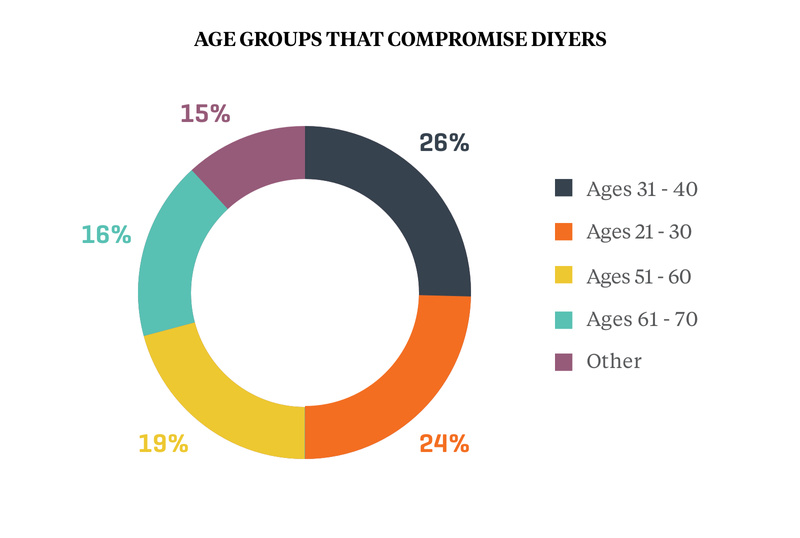
When you look at the demographics of our survey respondents, there’s no clear-cut age range that favors tackling their own home improvement projects. The largest group is between the ages of 31 and 40, but they’re not a clear majority at just 26%. In fact, the next two biggest age groups are 21 to 30 year-olds (24%) and 51 to 60 year-olds (19%). Even 61 to 70-year olds comprise an admirable 15% of our audience.
That tells you as a building materials manufacturer that DIY projects are not just a young person’s game. It’s smart to segment your leads and customers by age demographics so you can resonate with where they are in their lives, rather than where you think they ought to be.
Quality Outweighs Price
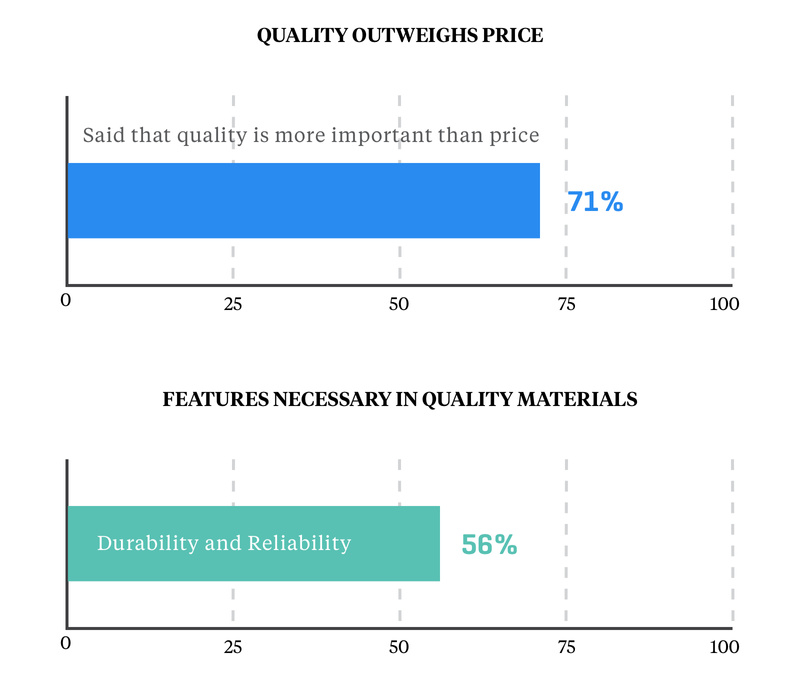
Part of the reason people are choosing to DIY is so they can spend more on the product and less on the labor. A whopping 71% of DIYers said that quality is more important than price when it comes to choosing the materials for their home improvement projects.
The two most important features they’re looking for are durability and reliability; together, they account for 56% of features necessary in quality materials. DIYers are not looking for cheap, short-term fixes. Instead, they’re looking for building materials manufacturers like you to demonstrate the value of your product with the right quality and the right look.
They Plan to Sidestep Hiring a Contractor
We saw a 41% increase since the 2015 survey in the number of people who plan to complete projects entirely on their own rather than hiring out even some of the work to a contractor.
The interesting thing here is that this shift applies to projects of all types. DIYers are tackling larger projects than ever, with only 16% of them planning to outsource help for bathroom projects and only 13% planning to do so on their kitchen and flooring projects.
Inspiration Is Found Overwhelmingly Online

An overwhelming 78% of respondents start their project research online. Compare that to the 11% each earned by in-store inspiration and word-of-mouth.
The vast majority also look at products online before they set foot in a store to take a look in person. This demonstrates a clear need for building materials companies to have an effective online presence whether or not your product is sold in retail stores. This is true, whether you are marketing to diyers, marketing to builders, or you are marketing to architects.
Pinterest and YouTube Remain On Top
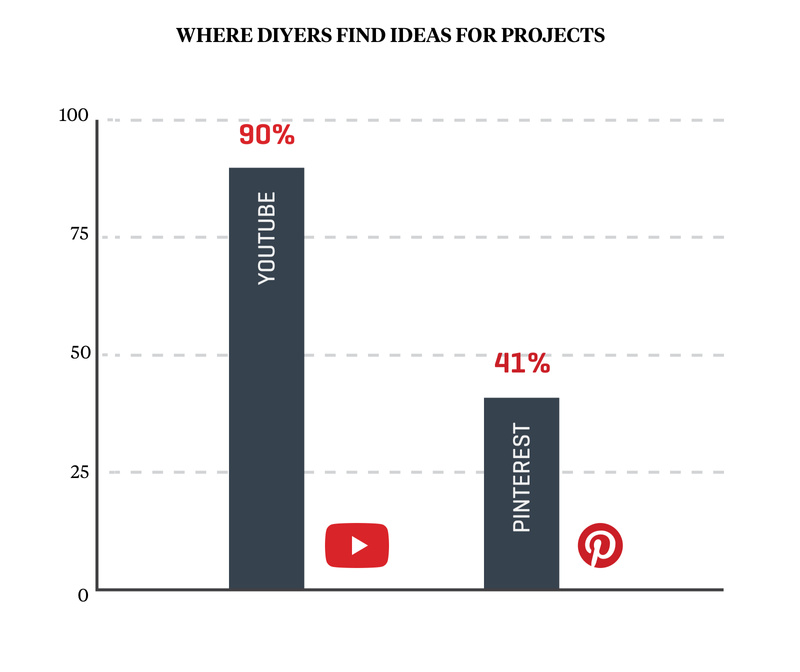
41% of DIYers say they use Pinterest to find ideas for DIY projects.
90% of DIYers watch how-to videos on YouTube during an actual project.
If you’re a building materials company wondering where the DIY audience lives, this gives you a pretty clear answer. People are more frequently searching for online resources to help them complete their home renovations.
Mobile Friendliness Is a Must-Have
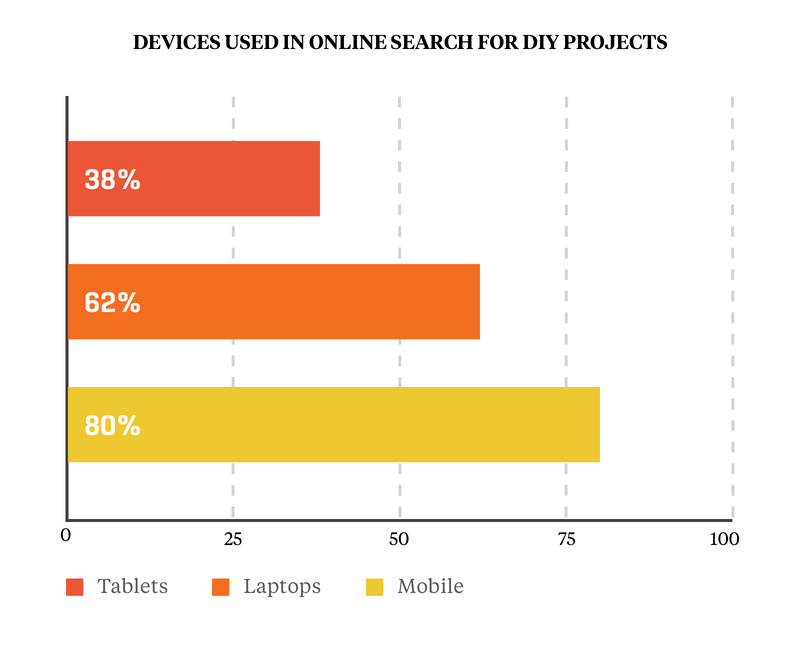
Shopping online through your phone is a growing trend across all demographics and industries. And mobile phone traffic has actually now surpassed desktop traffic in most cases.
Our new survey reveals 80% of DIYers use their phone to research DIY projects. Laptops are next with 62% of DIYers using them at some point for research and tablets have fallen to just 38% of respondents.
Your website needs to not only be user-friendly when navigating on a desktop but also (and more importantly) when used on a mobile device.
Another reason to ensure your site is mobile-friendly is that 79% of DIYers reported using a mobile device while in a store to check on details and reviews.
Online Comparison Information Is Helpful
When it comes down to it, DIYers are looking for help in making the best purchase decision possible. The more information available on a manufacturer’s website, the more likely it is for a DIYer to choose that product.
The three most important pieces of information they’re looking for online are:
- Pricing
- Customer Reviews
- How-to Videos
As we discussed earlier, accurate budgets are crucial to DIYers. They’re often willing to spend the money as long as they know how much to plan for. Transparent pricing along with accessible information on installation should be part of every building materials manufacturer’s marketing plan.
Brand Loyalty Doesn’t Exist

How DIYers interact with brands is changing in a way that opens the door significantly to allow lesser known manufacturers to have an authentic dialogue with potential customers. Hardly any DIYers (less than 1%) research a project based on brand alone. In reality, 63% of them don’t care about the brand at all. Only 36% research both the brand and the product.
Even more telling, DIYers are becoming more open to interacting with brands online. Social media is becoming increasingly influential, with a 27% jump in the likelihood of DIYers to interact with a brand online.
Online influencers are also becoming an integral part of the DIY sales cycle. Nearly half (47%) of our survey respondents said they had already started a project or purchased a product directly because they first saw it on a blog or social media brand. Partnering with online influencers can be extremely impactful in reaching the right audience for your product.
Sourcing Matters
It’s no longer enough to label a product green and assume that’s enough to persuade an environment-conscious buyer. The new buzzword is sustainability and DIYers are willing to pay for it. 65% said they’re willing to shell out more for a building material that’s sourced sustainably, especially if there’s a story to tell alongside the product.
Energy-efficient materials are equally valuable to DIYers, who recognize the long-term benefits of these cost-saving solutions. 92% of those surveyed were willing to pay more for a product that could save them money on utilities.
Recycled materials, on the other hand, have dropped from the spotlight, at least in the eyes of DIYers. Only 55% said they’re willing to pay more if a product comes from recycled materials, indicating that this trend is becoming more of an expectation than a stand-out feature.
54% of DIYers are also ok with spending more on a product if it integrates with smart technology, particularly the ability to sync with their smartphones. While this number is still relatively small, it’s on the rise, representing a 25% increase since our 2015 survey.
The DIY Consumer Is Here to Stay
If there’s anything we’ve learned between our first DIY Consumer survey and our most recent one, it’s that DIY home improvement isn’t a trend — it’s a movement.
These weekend warriors are tackling major renovations entirely on their own. The more you can do to arm them with the information they need to succeed, the more likely they are to budget extra funds for your product while feeling confident in the resources they have on hand to complete their projects.



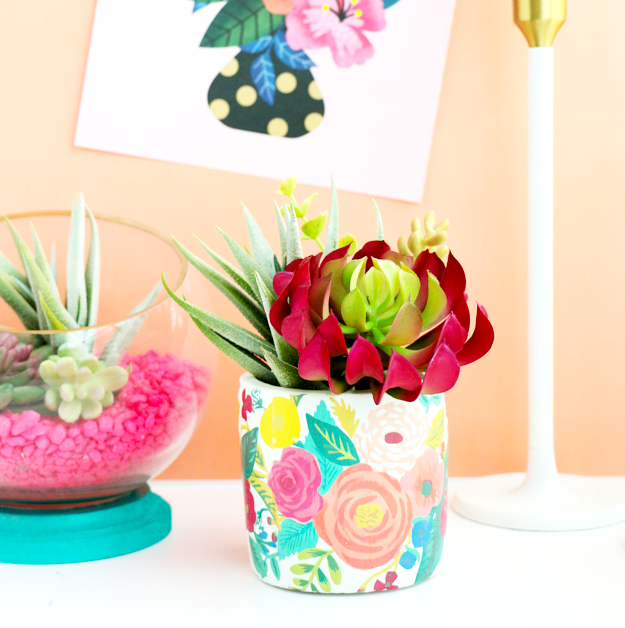

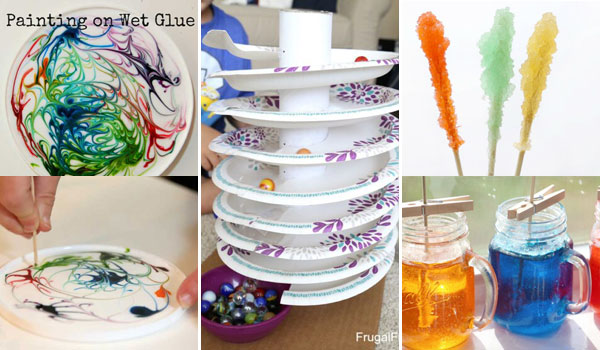




1 Comment
Comments are closed.